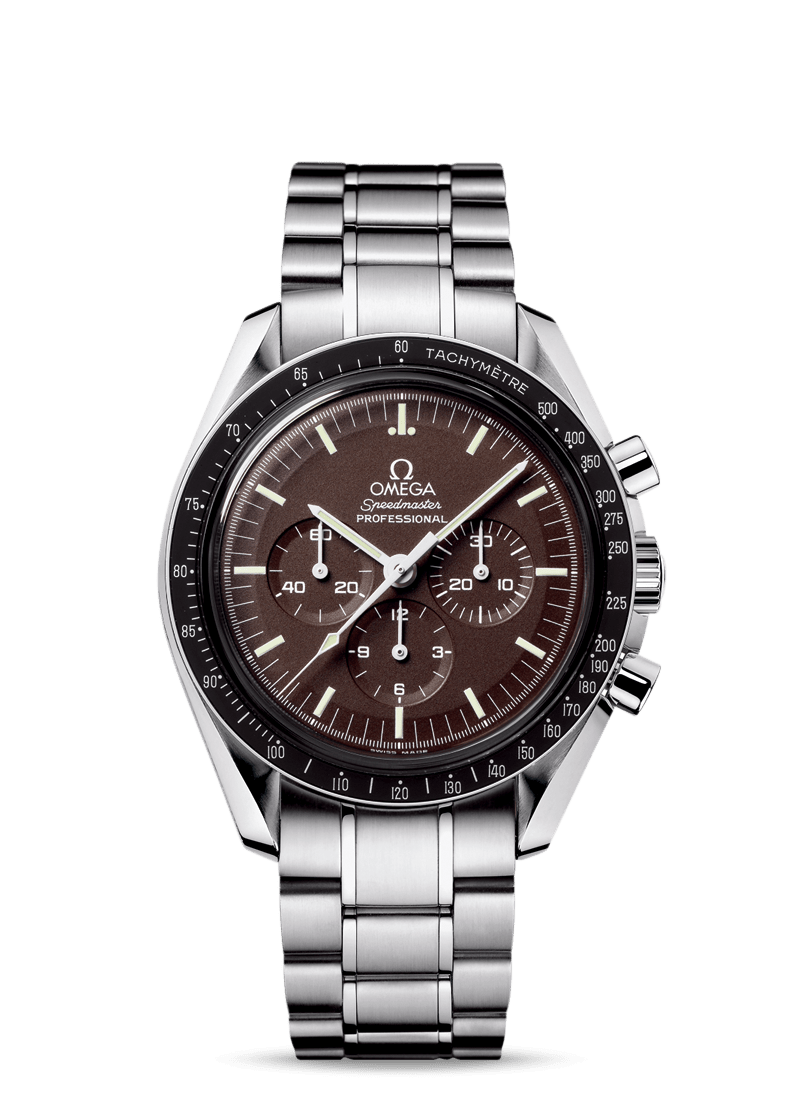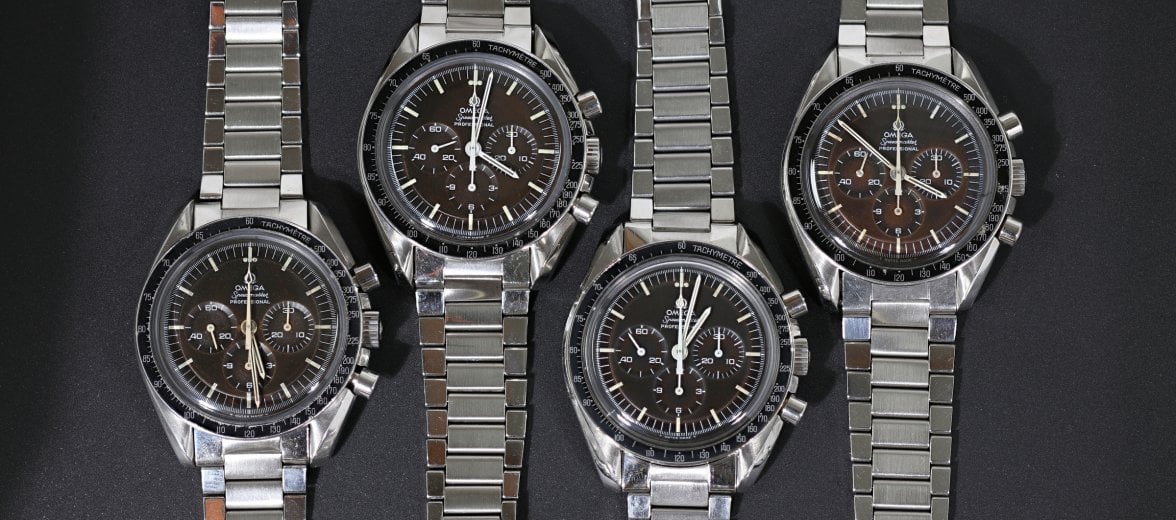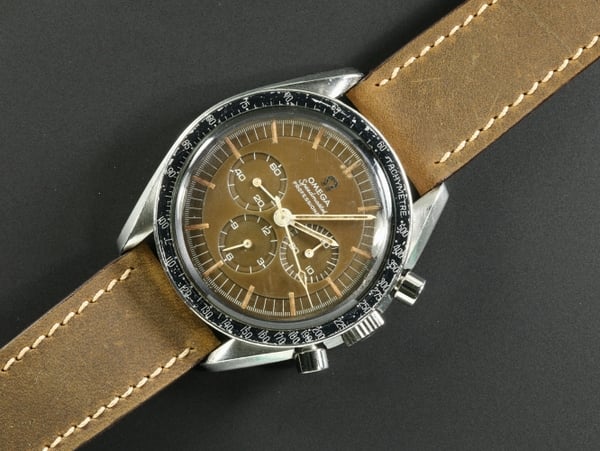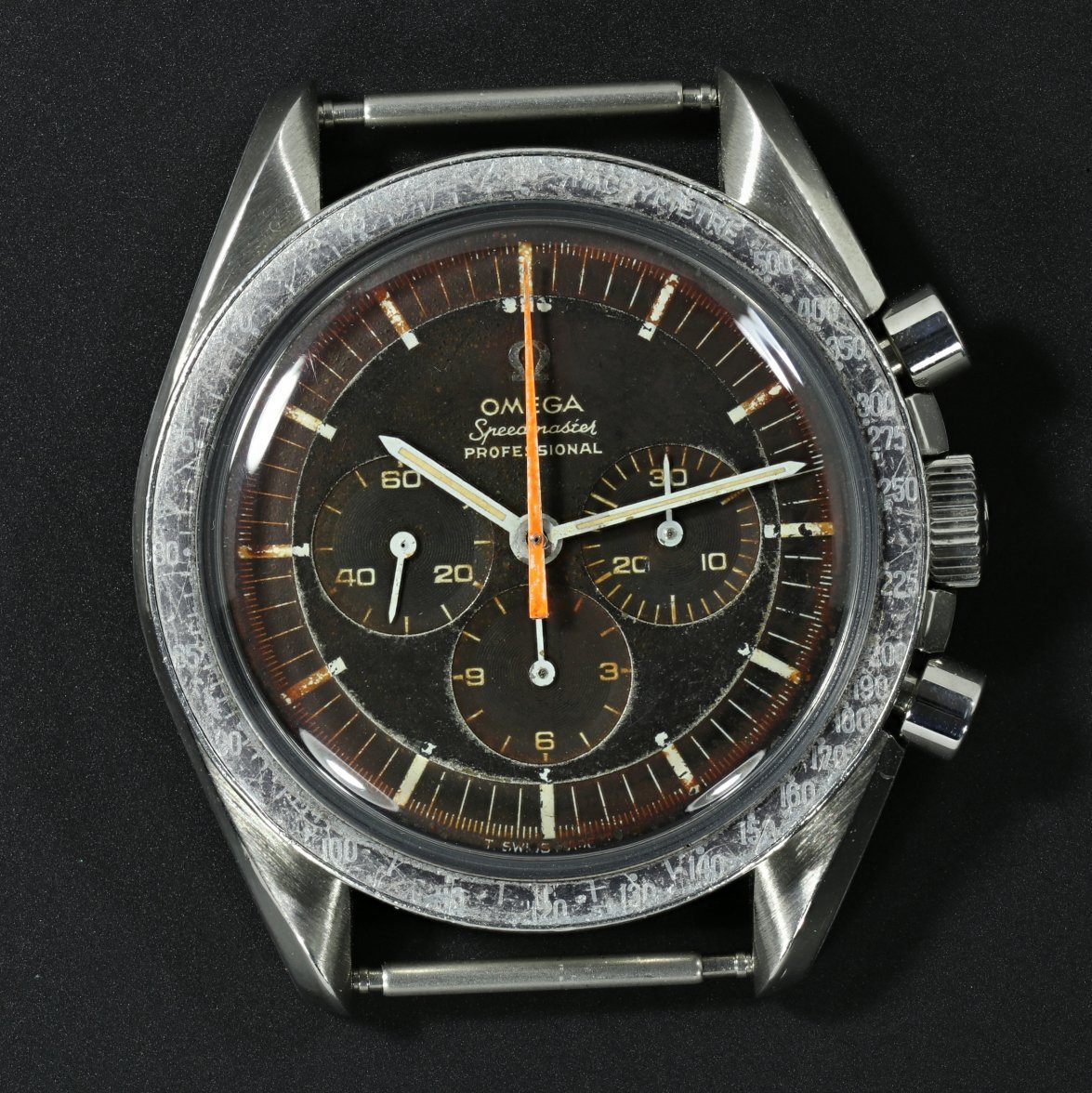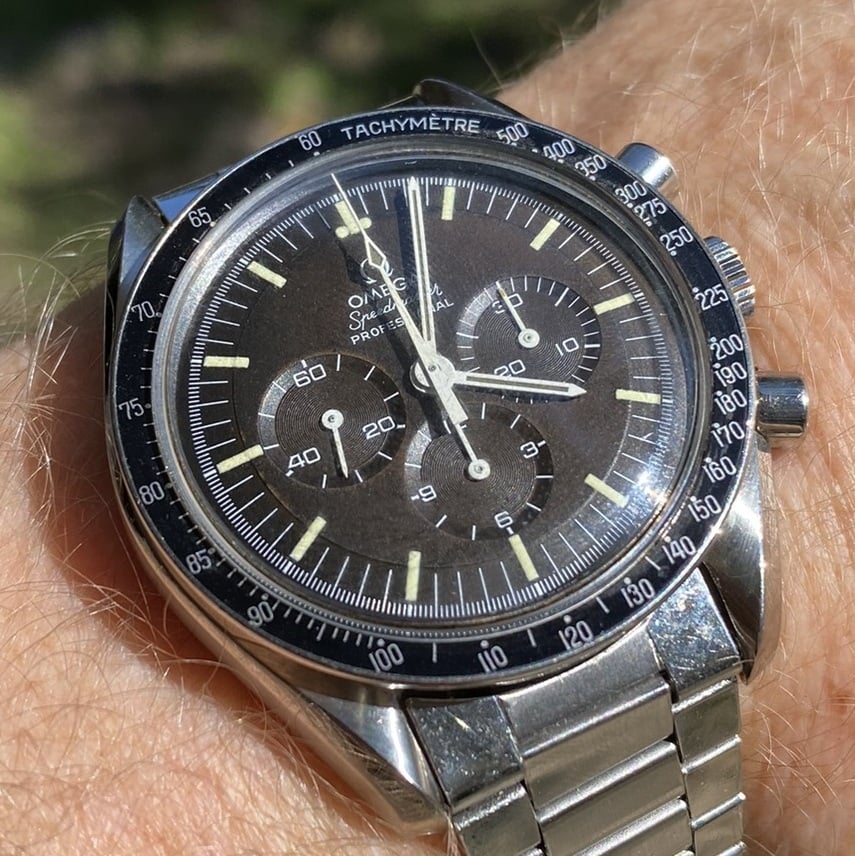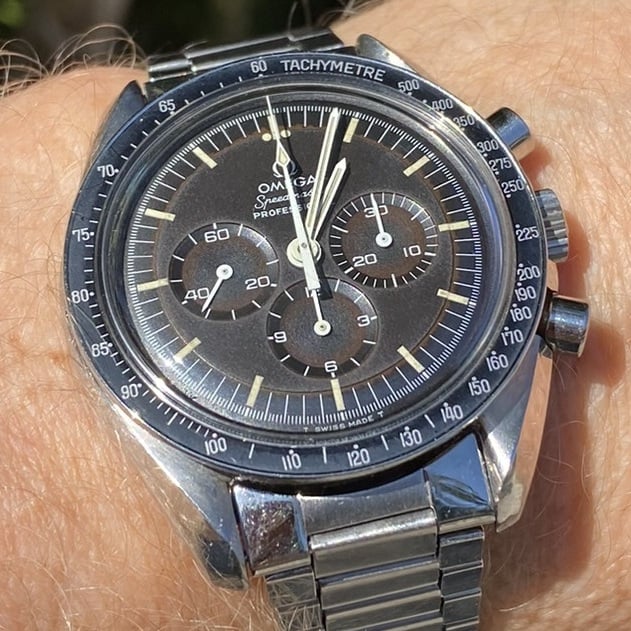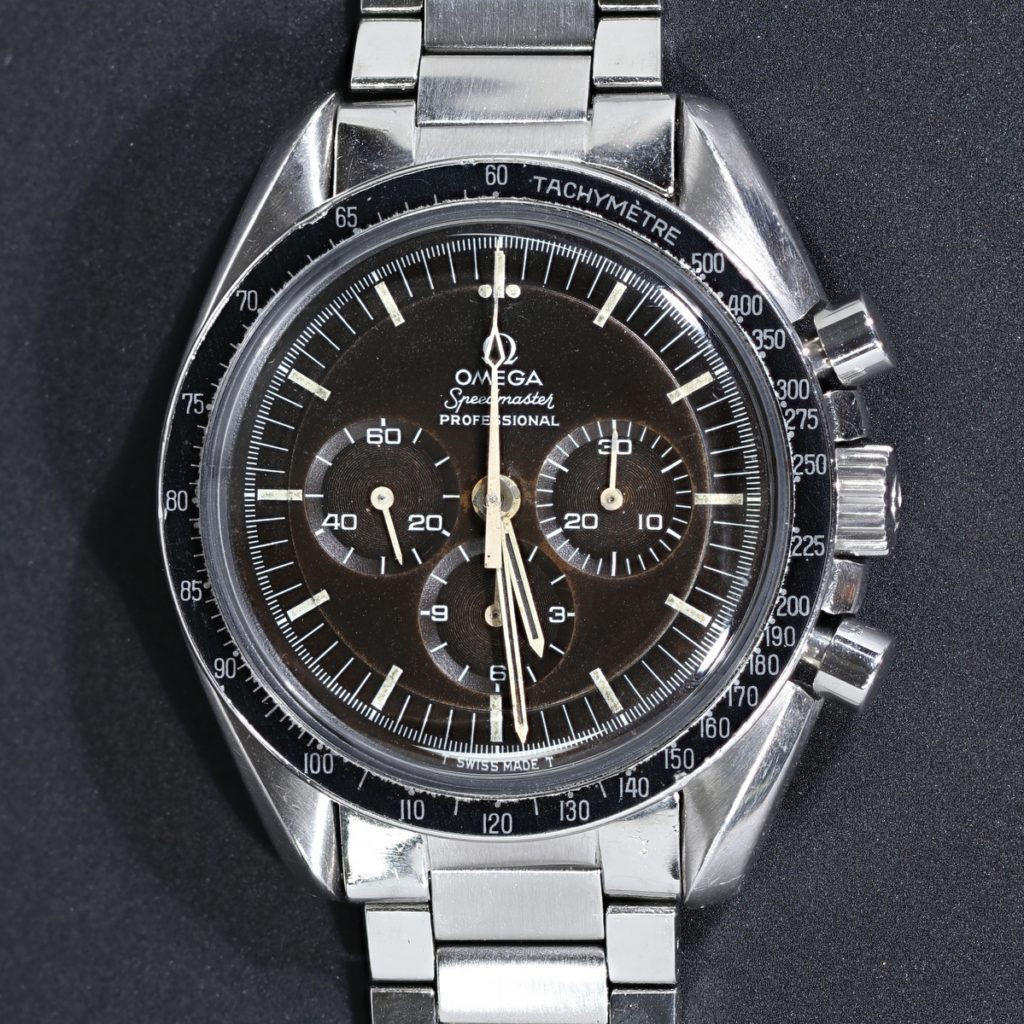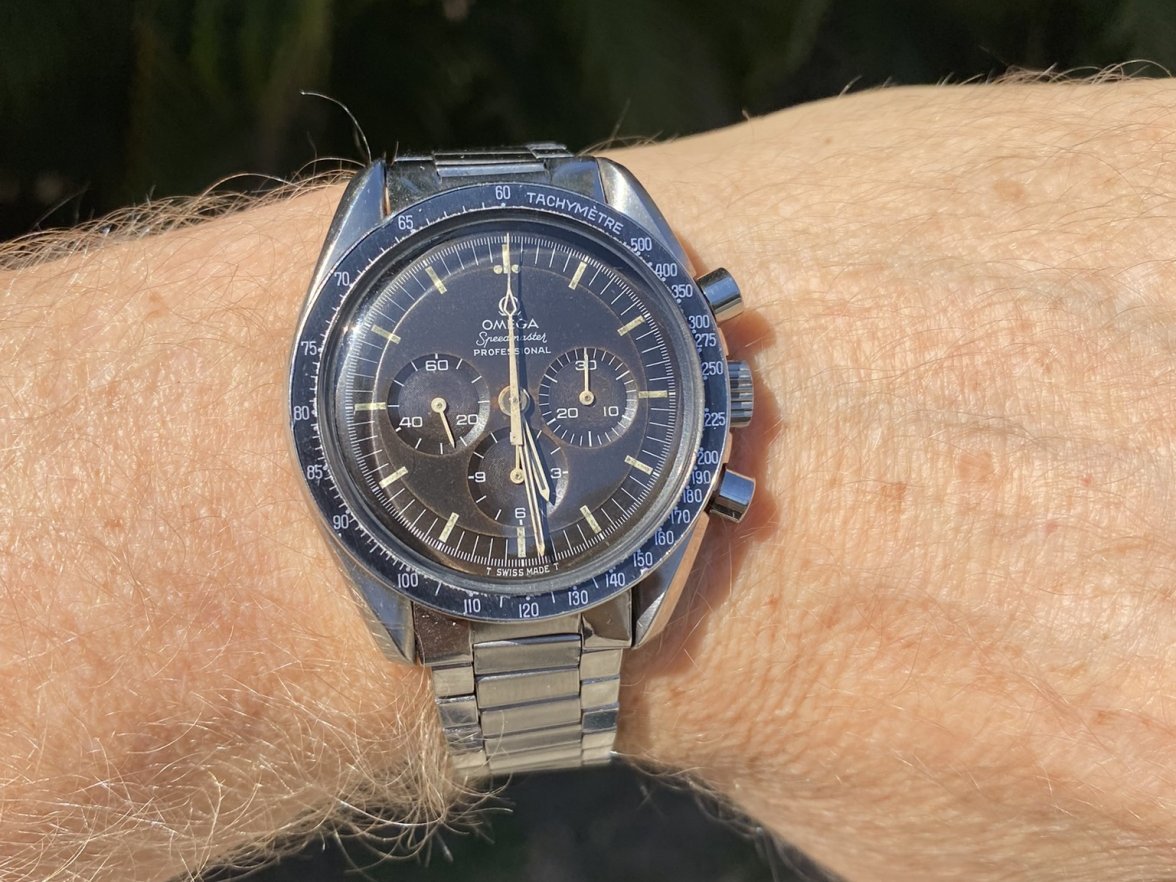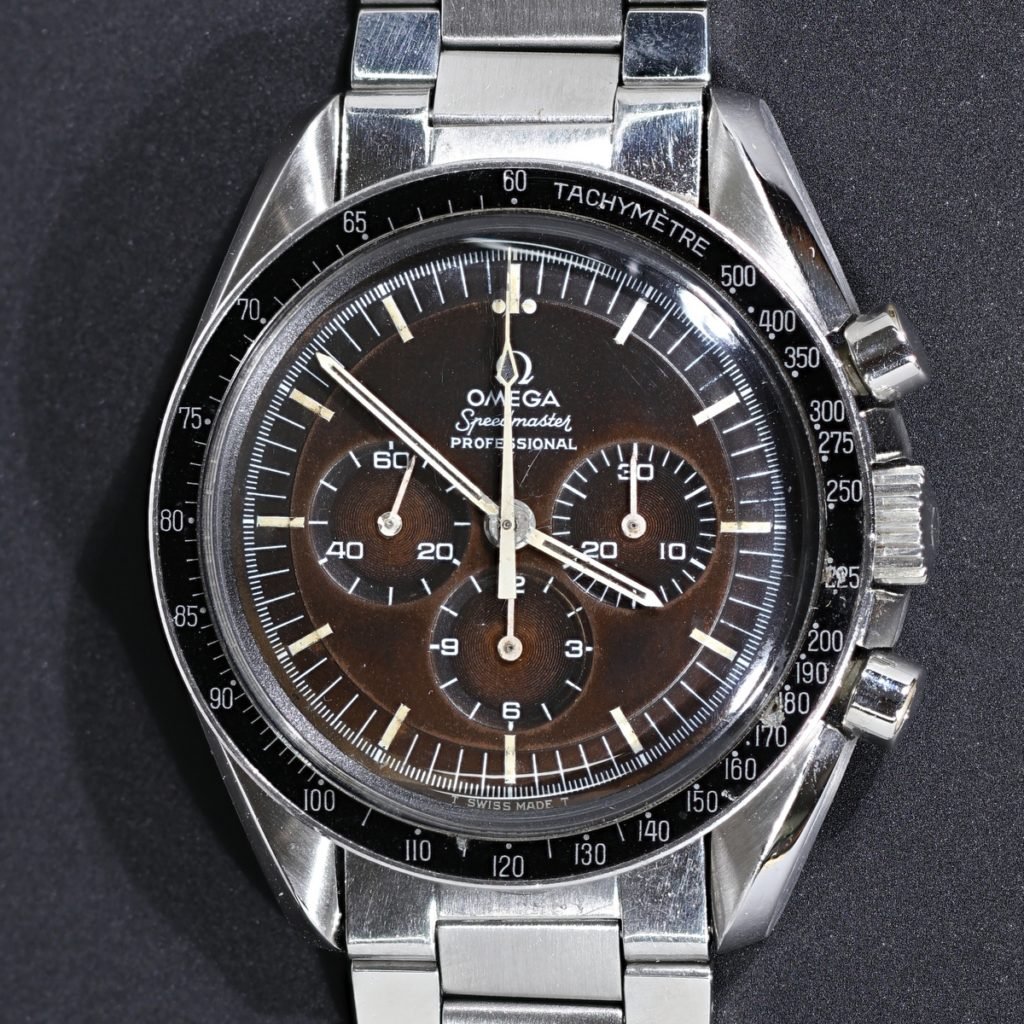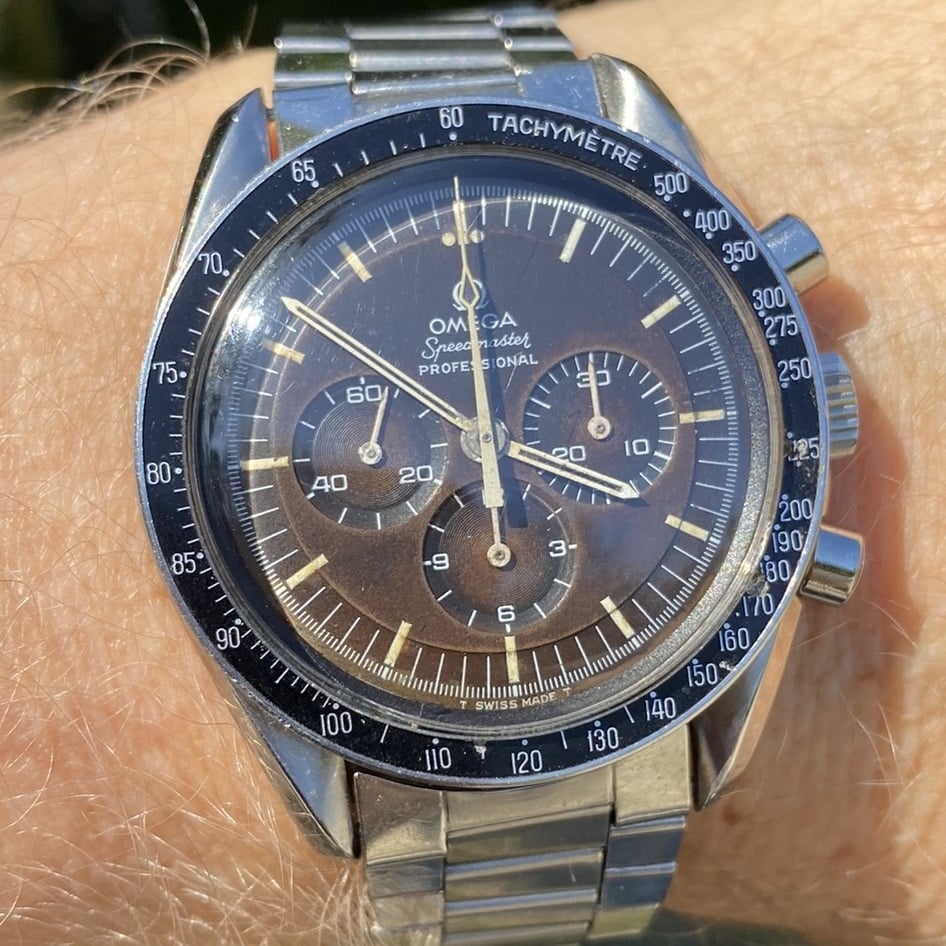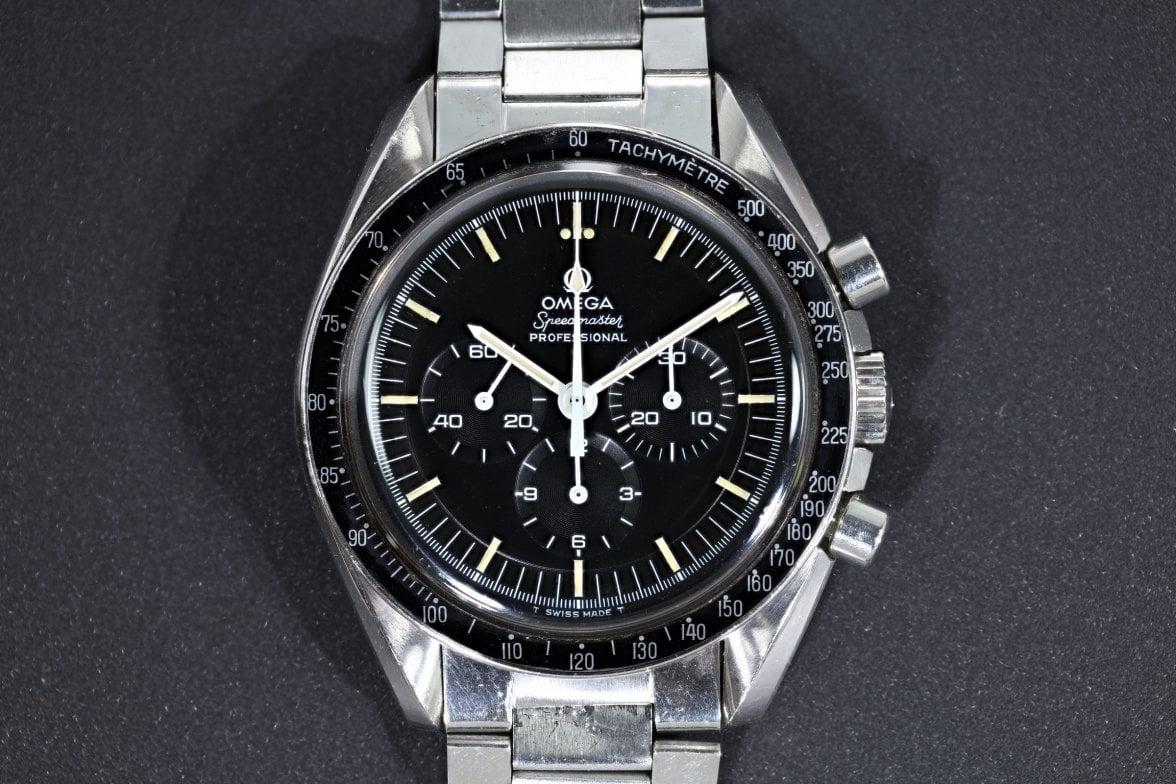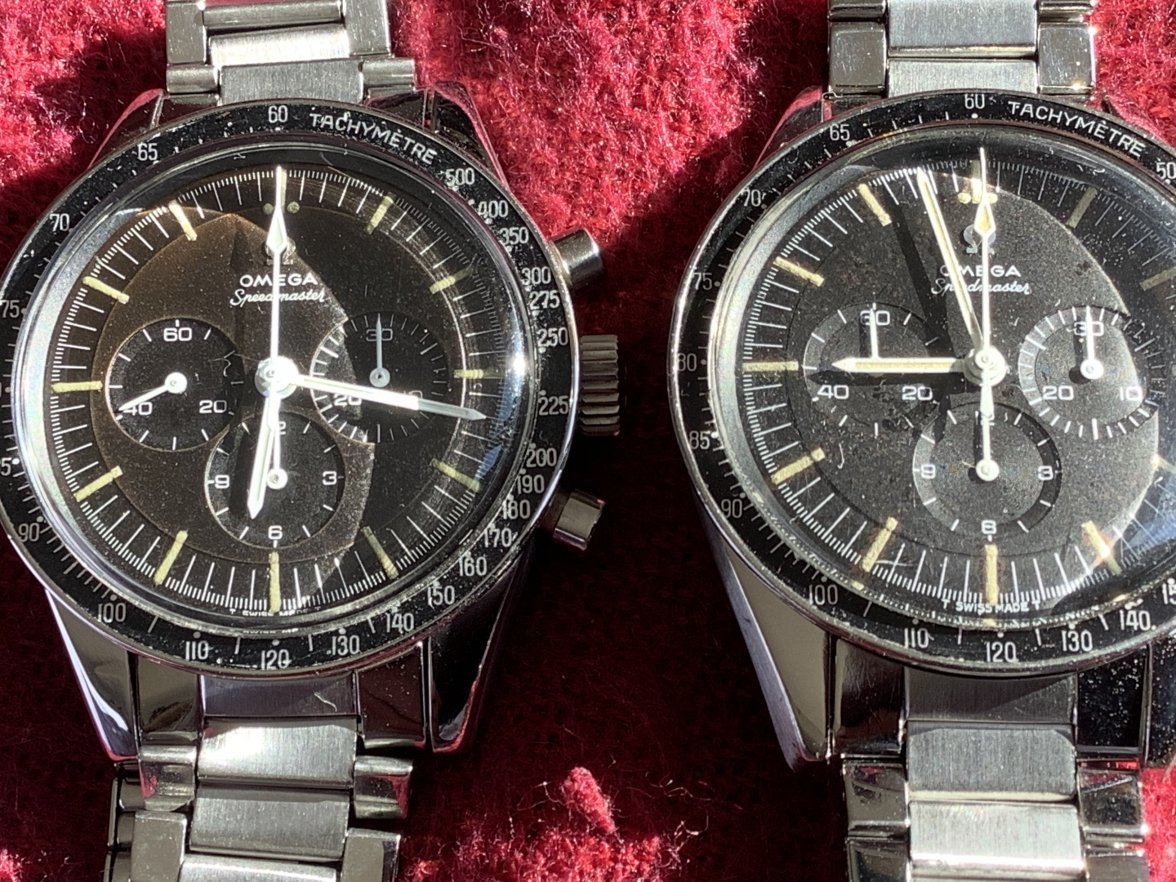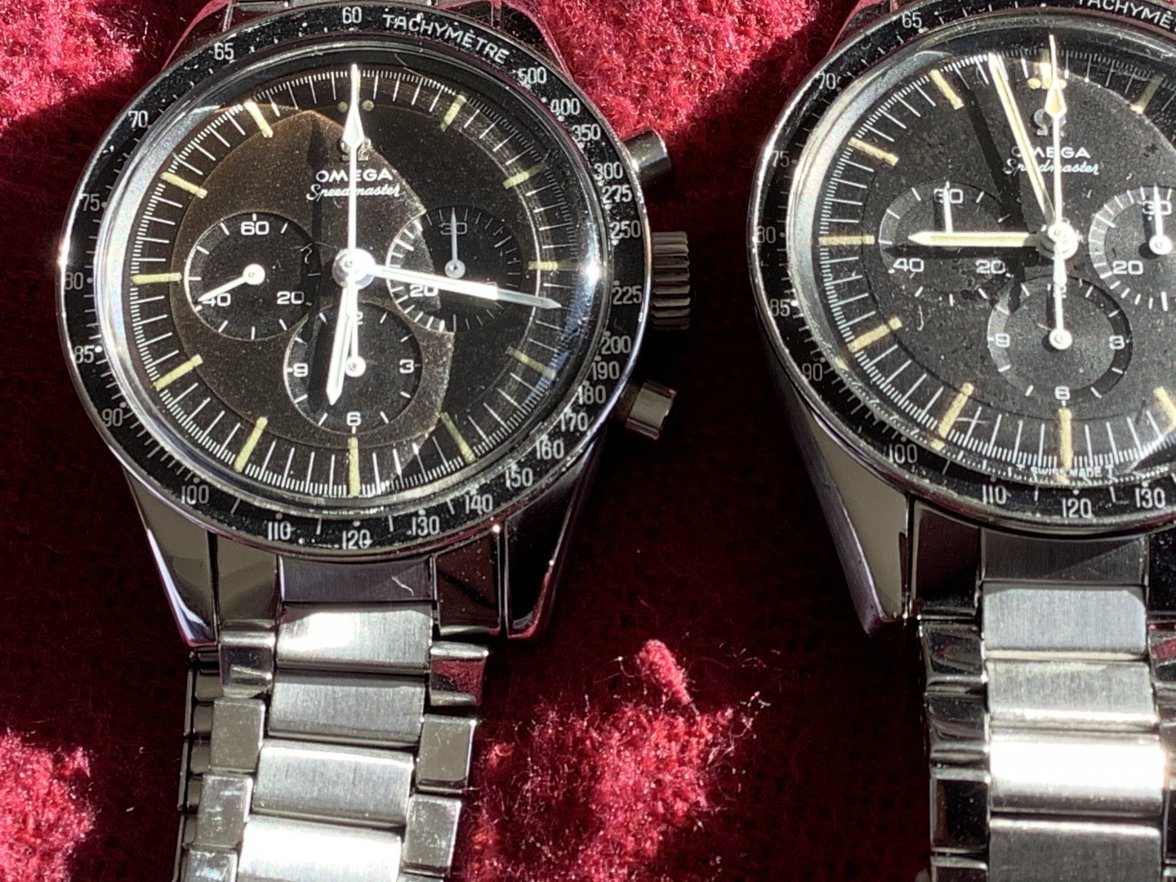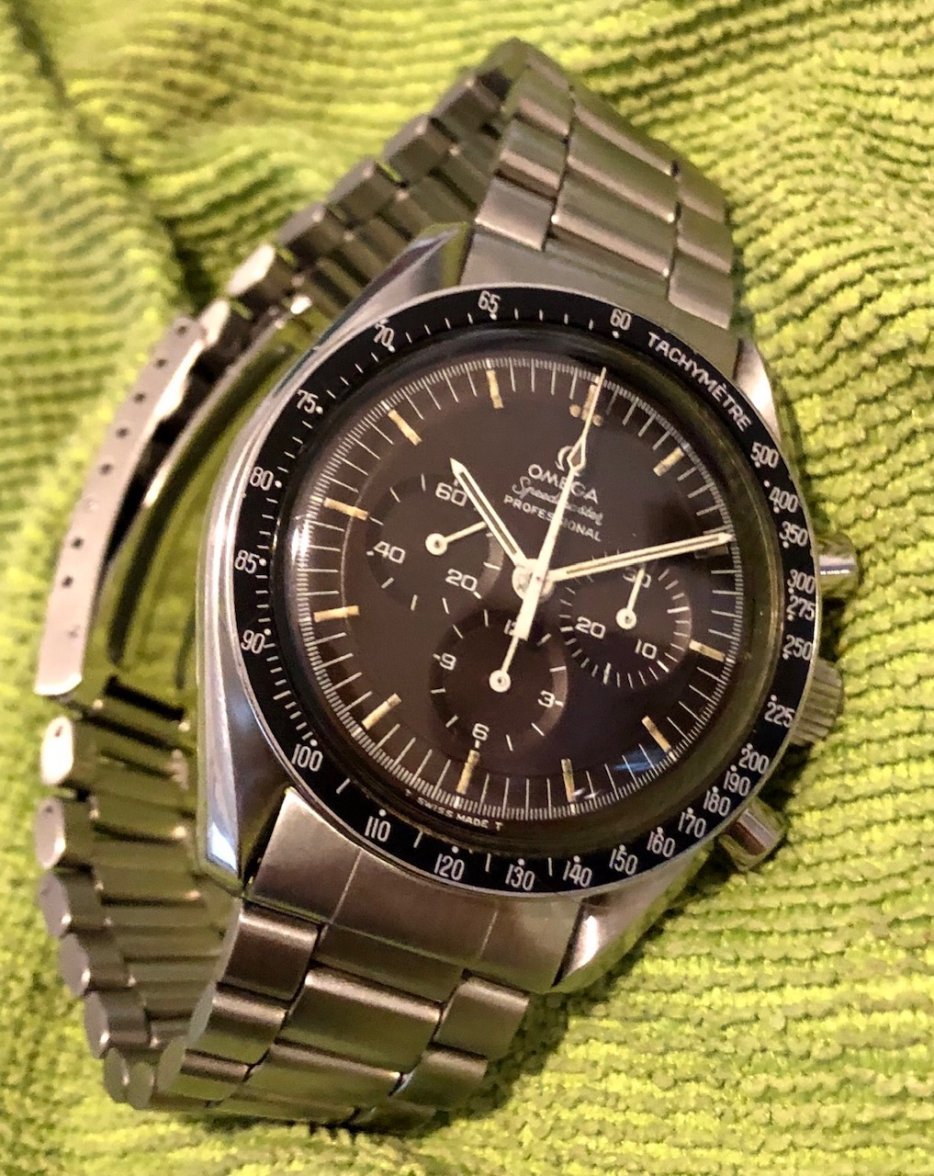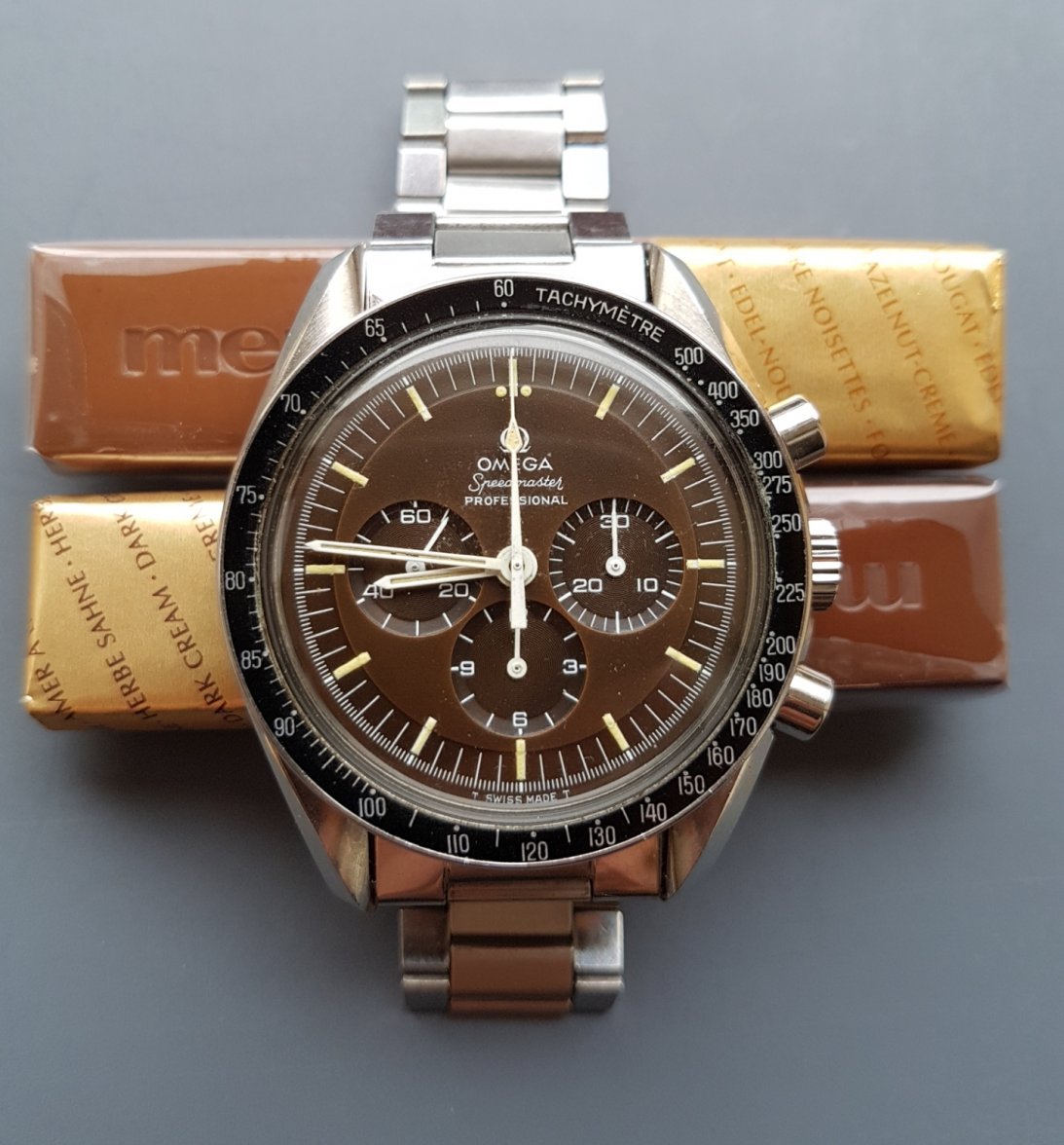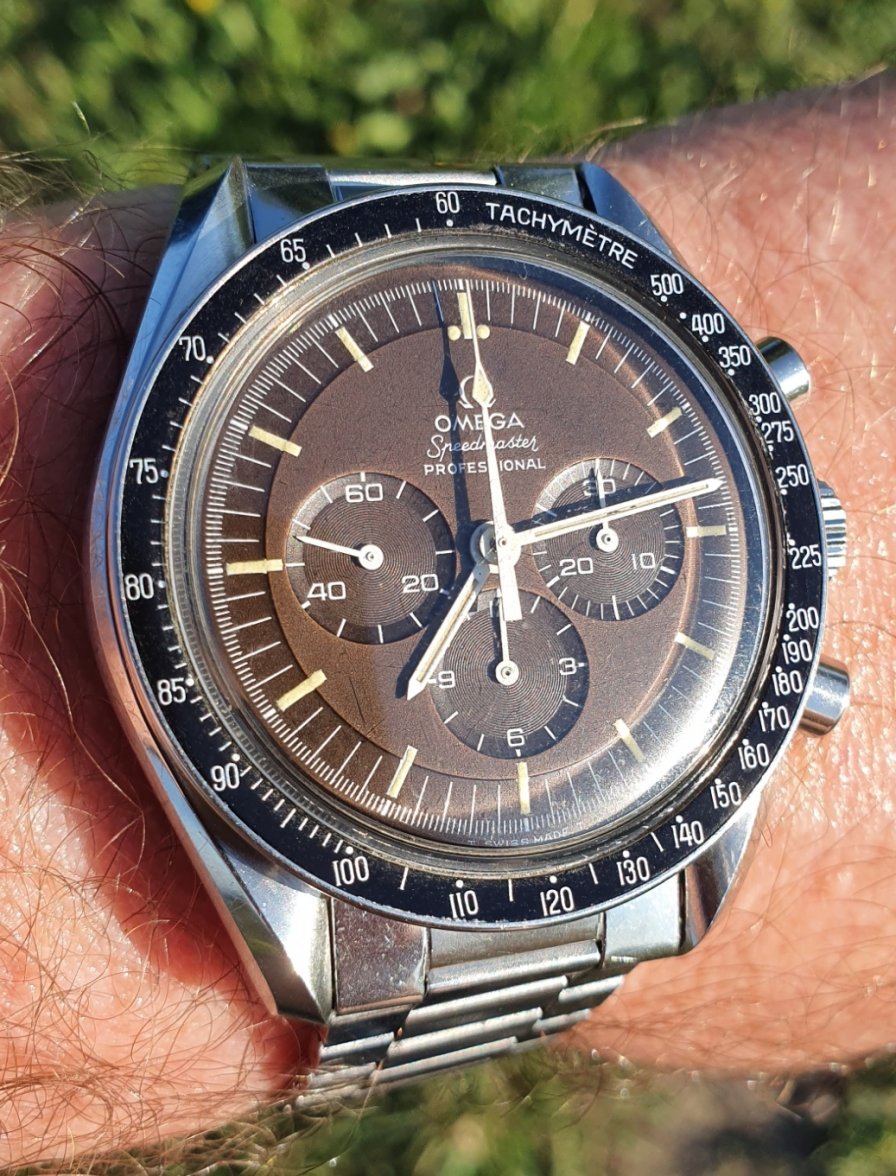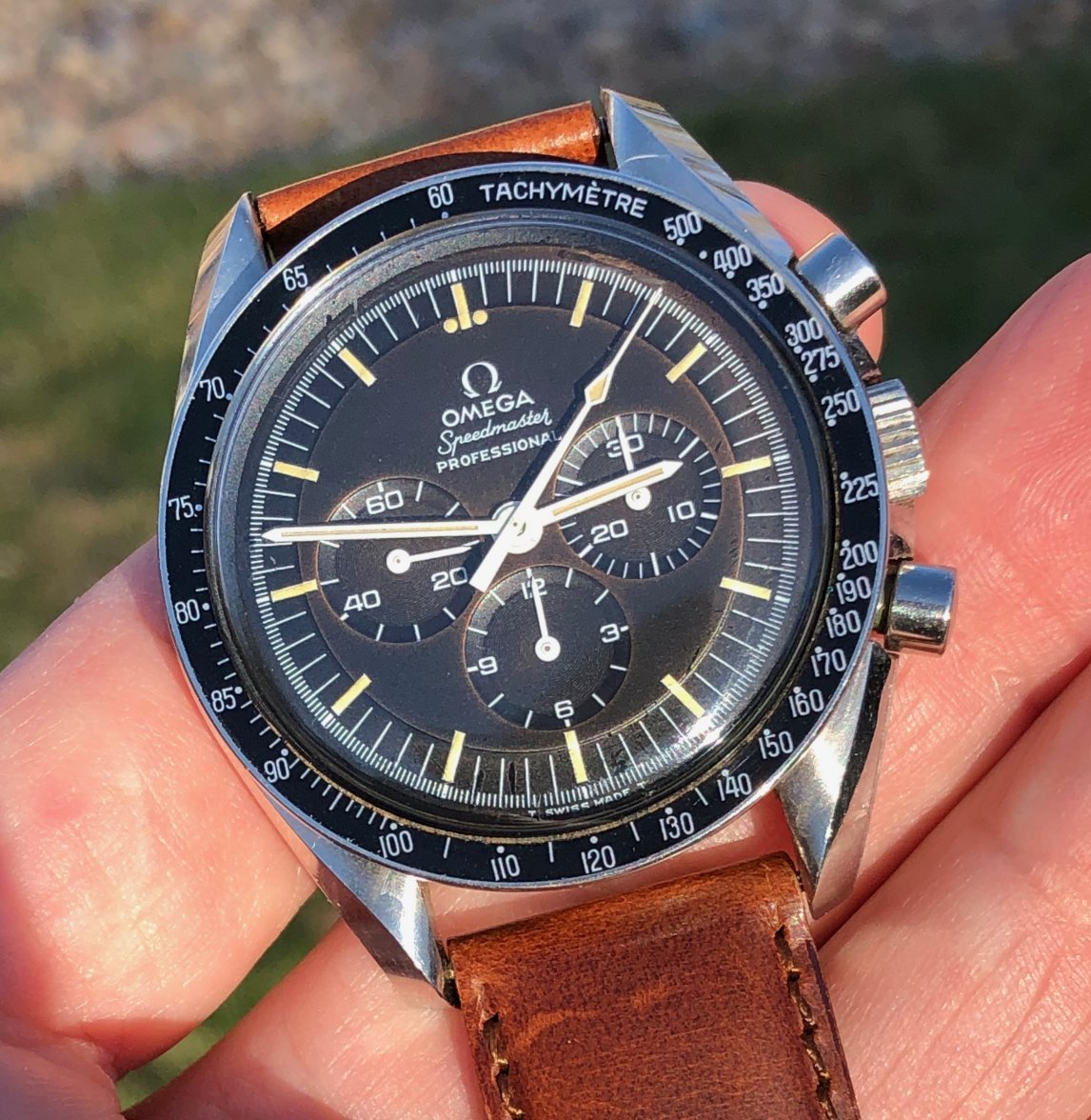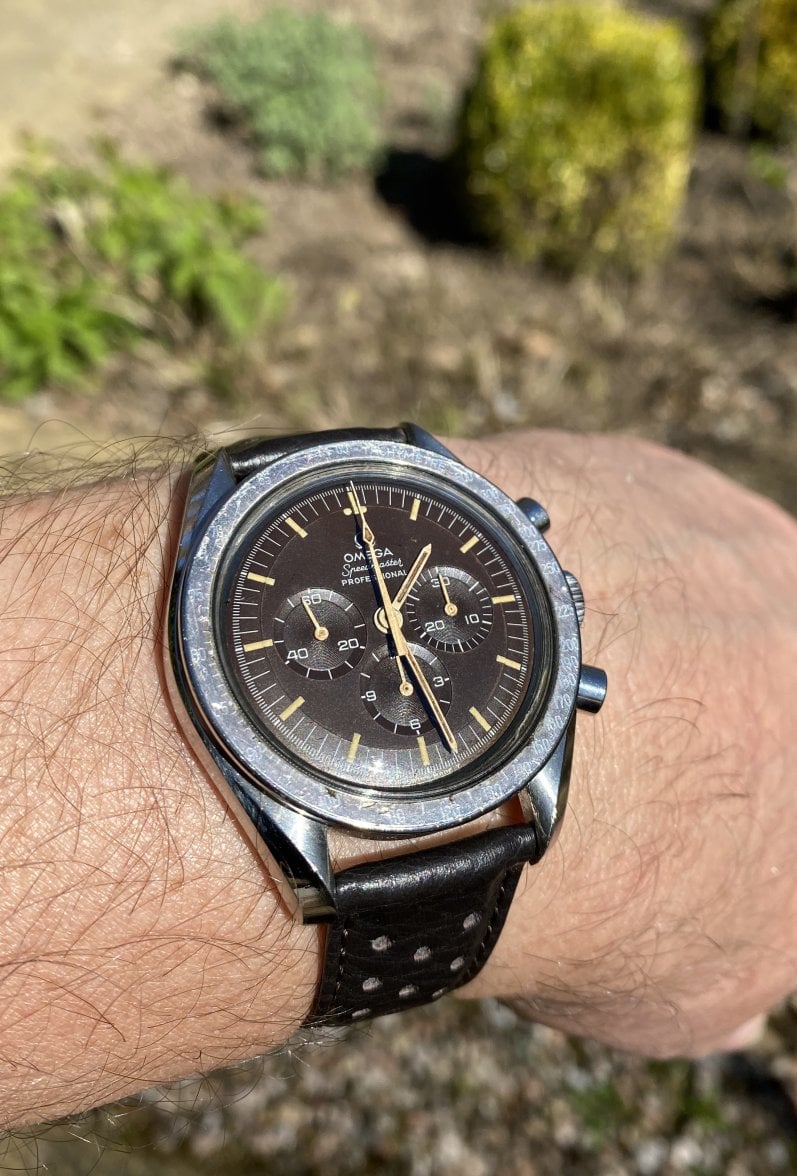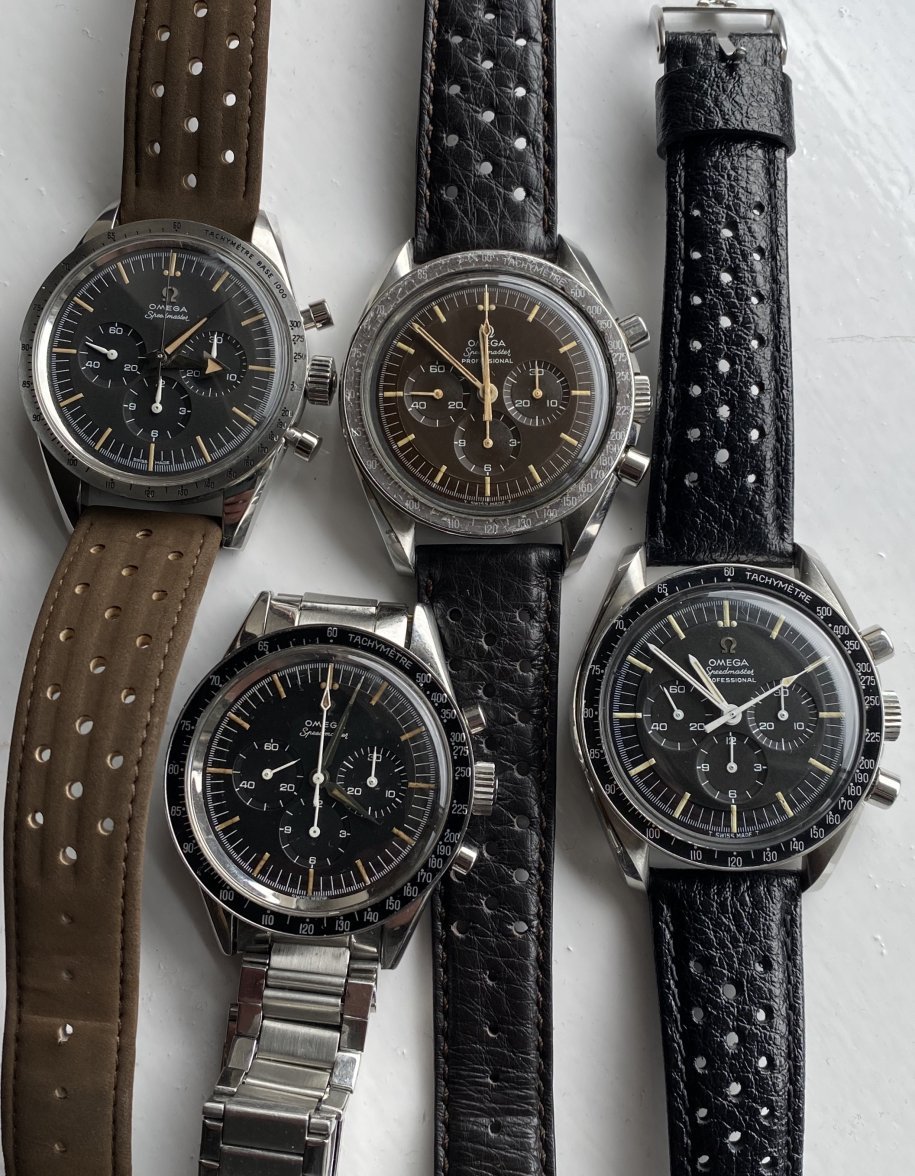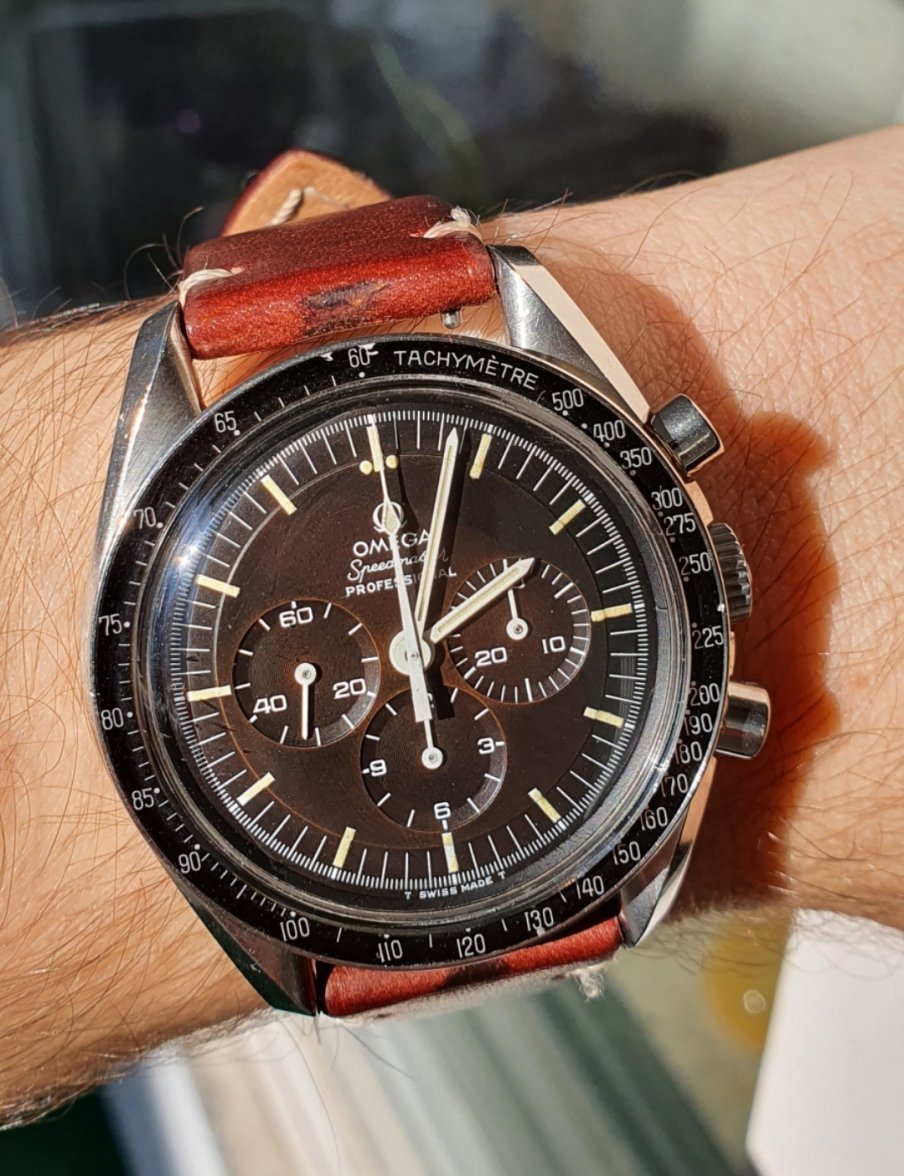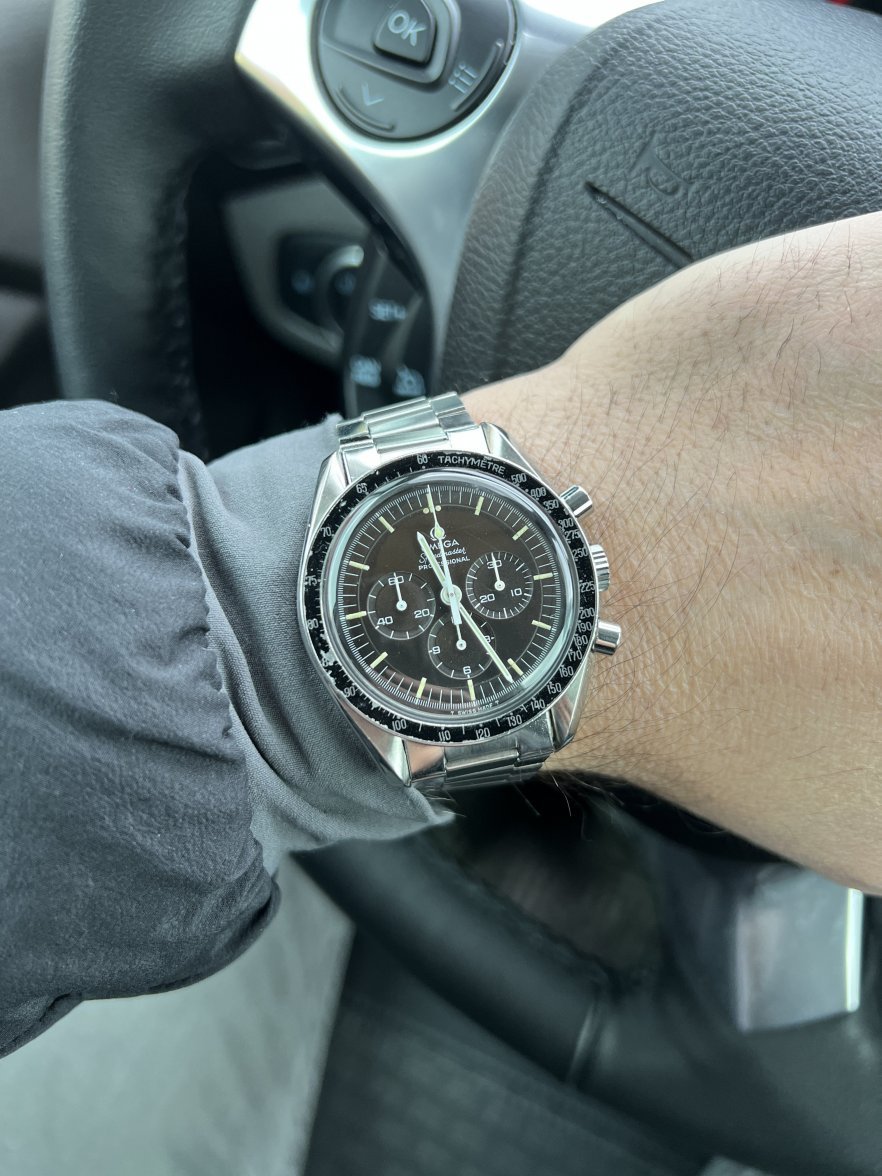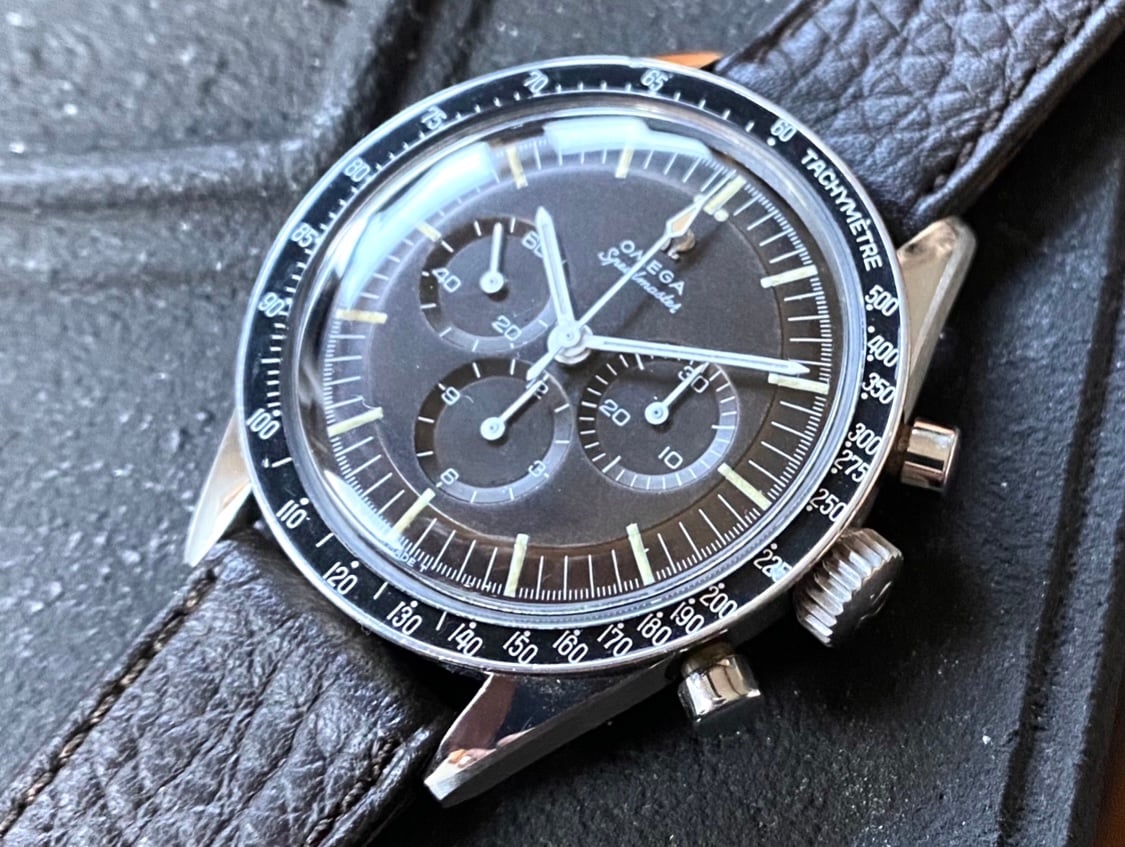Spacefruit
··Prolific Speedmaster HoarderAll speedmaster dials start black, and some, due to decay, change colour.
I am talking about Pre 78 Speedmasters as is my focus. No Speedmasters left the factory with a brown dial during this time, it was not until the
311.30.42.30.13.001 in this century that omega deliberately made a brown speedmaster, and many cannot actually see the brown. (Me included) the photo from the official website is not what it looks like when you hold one - it is very hard to see the brown.
We will focus now on the pre 1978 watches, and in this group the change is most apparent in 2911xxx and 2960xxxx serials, though it is known in other ranges. In my opinion the best colours are more often seen in 2911xxxx, though this does not mean the best cannot be seen in other ranges. By the very nature of the source of the colour (damage) we seek to find the line between decay and attraction.
When comparing browns, often it is only when placing a black dial next to a brown that we can initially see it Also, when showing a group of browns, the best one will “kill” the others.(!), see here:
An extreme brown dial is often sought after by new collectors as it is easily identifiable, however once in ownership these tend to loose attraction. This is because they often are actually quite poor quality, and the colour is derived from severe decay, often of the dial plate.
This one was not badly decayed, and almost certainly had some help on the lume. What ever environmental factors help turn the dial brown, often damage the lume.
So in these extreme brown dials, the quality is often poor. Experienced collectors have led me to understand that a black dial, with strong brown secondary, is actually a more attractive thing to live with. Of course not everyone sees this the same way. Here is an extreme example, which while having strong attraction in terms of Wabi Sabi it is not what collectors call fine.
So as my journey deeper into brown dials progressed, I find myself appreciating and valuing much subtler colours, that retain the quality, like this -69:
Note the above watch has a fine appearance, and when you look at the dial closely, you can see the brown tint. I notice it especially at the step. This colour is much more pronounced in sunlight:
This is a very fine watch, and the dial colour is more and more attractive as you wear it. This is in contrast to the very brown dials, the decayed ones, above. It is an exquisite example of a black dial with a strong brown secondary hint. This is what I think old school collectors called chocolate, though in today’s market collectors often seek a stronger colour before calling it tropical. It is a classic fine example from a single family owner.
Here is another noticeably brown. The studio lights are set to 5600k.
Once again here is the sunshine photo which clearly demonstrates why sellers only show browns this way.
So this shows the importance of lighting, and focus. The focus is so we can zoom in and see the quality of the dial paint itself.
For me the most valuable and desirable is the Galaxy, swirly chocolate dial. Here is one:
This watch is not without some fairly minor quality issues, minor in this case because it has that lovely dial, but nonetheless need to be noted. The bezel is slightly greyed, and it is worn and damaged on the inner ring - don't know why. The paint at the hands centre is chipped off, presumably from removal and replacement during services. This is restorable, but in the years that I have owned this watch I have not felt the need to do it. Otherwise the watch is fabulous, and even came with its original Omega guarantee. This original paperwork can blind me slightly to any faults, even though I tell anyone who listens not to be swayed by papers!
Here it is in sunlight - this accentuates the bezel fade
My favorite? This one.
This one also has problems, that on a black dial would make me sit up.
The scratch on the subdial would put me right off a black dial, I simply would not buy it. However that colour is the best I have seen, and in wear you just do not see the scratch. Here it is in sunlight.
These are all extraordinary and very rarely seen, and the quality rarely comes on the open market. By open market I mean auctions or dealers websites. Sellers do not need to consign as these are usually sold by word of mouth, before being marketed.
All Brown Dials appear different in different light conditions, and all are slightly different from another. I have owed a large number, and each time I get one I can compare to the others and so I have learned which one is most attractive to me. I have found that strong browns (in the 145022 reference) do not maintain their attraction to me over time, where as the watches pictured here become more and more attractive the more I look at them.
I tend not to use the word Tropical to describe speedmaster dials, as I do not find it helpful.
Last point, is that I am convinced someone somewhere is playing around with dials to alter the appearance. Its a risky game now, as the black vintage dials are valuable in their own right. As yet, I think it is a rare occurrence, and the ones I think are altered to not attract me. I do not think it is a problem.
I would be happy to see other browns here.
For the record, here is a black dial under the same 5600k light conditions:
I am talking about Pre 78 Speedmasters as is my focus. No Speedmasters left the factory with a brown dial during this time, it was not until the
311.30.42.30.13.001 in this century that omega deliberately made a brown speedmaster, and many cannot actually see the brown. (Me included) the photo from the official website is not what it looks like when you hold one - it is very hard to see the brown.
We will focus now on the pre 1978 watches, and in this group the change is most apparent in 2911xxx and 2960xxxx serials, though it is known in other ranges. In my opinion the best colours are more often seen in 2911xxxx, though this does not mean the best cannot be seen in other ranges. By the very nature of the source of the colour (damage) we seek to find the line between decay and attraction.
When comparing browns, often it is only when placing a black dial next to a brown that we can initially see it Also, when showing a group of browns, the best one will “kill” the others.(!), see here:
An extreme brown dial is often sought after by new collectors as it is easily identifiable, however once in ownership these tend to loose attraction. This is because they often are actually quite poor quality, and the colour is derived from severe decay, often of the dial plate.
This one was not badly decayed, and almost certainly had some help on the lume. What ever environmental factors help turn the dial brown, often damage the lume.
So in these extreme brown dials, the quality is often poor. Experienced collectors have led me to understand that a black dial, with strong brown secondary, is actually a more attractive thing to live with. Of course not everyone sees this the same way. Here is an extreme example, which while having strong attraction in terms of Wabi Sabi it is not what collectors call fine.
So as my journey deeper into brown dials progressed, I find myself appreciating and valuing much subtler colours, that retain the quality, like this -69:
Note the above watch has a fine appearance, and when you look at the dial closely, you can see the brown tint. I notice it especially at the step. This colour is much more pronounced in sunlight:
This is a very fine watch, and the dial colour is more and more attractive as you wear it. This is in contrast to the very brown dials, the decayed ones, above. It is an exquisite example of a black dial with a strong brown secondary hint. This is what I think old school collectors called chocolate, though in today’s market collectors often seek a stronger colour before calling it tropical. It is a classic fine example from a single family owner.
Here is another noticeably brown. The studio lights are set to 5600k.
Once again here is the sunshine photo which clearly demonstrates why sellers only show browns this way.
So this shows the importance of lighting, and focus. The focus is so we can zoom in and see the quality of the dial paint itself.
For me the most valuable and desirable is the Galaxy, swirly chocolate dial. Here is one:
This watch is not without some fairly minor quality issues, minor in this case because it has that lovely dial, but nonetheless need to be noted. The bezel is slightly greyed, and it is worn and damaged on the inner ring - don't know why. The paint at the hands centre is chipped off, presumably from removal and replacement during services. This is restorable, but in the years that I have owned this watch I have not felt the need to do it. Otherwise the watch is fabulous, and even came with its original Omega guarantee. This original paperwork can blind me slightly to any faults, even though I tell anyone who listens not to be swayed by papers!
Here it is in sunlight - this accentuates the bezel fade
My favorite? This one.
This one also has problems, that on a black dial would make me sit up.
The scratch on the subdial would put me right off a black dial, I simply would not buy it. However that colour is the best I have seen, and in wear you just do not see the scratch. Here it is in sunlight.
These are all extraordinary and very rarely seen, and the quality rarely comes on the open market. By open market I mean auctions or dealers websites. Sellers do not need to consign as these are usually sold by word of mouth, before being marketed.
All Brown Dials appear different in different light conditions, and all are slightly different from another. I have owed a large number, and each time I get one I can compare to the others and so I have learned which one is most attractive to me. I have found that strong browns (in the 145022 reference) do not maintain their attraction to me over time, where as the watches pictured here become more and more attractive the more I look at them.
I tend not to use the word Tropical to describe speedmaster dials, as I do not find it helpful.
Last point, is that I am convinced someone somewhere is playing around with dials to alter the appearance. Its a risky game now, as the black vintage dials are valuable in their own right. As yet, I think it is a rare occurrence, and the ones I think are altered to not attract me. I do not think it is a problem.
I would be happy to see other browns here.
For the record, here is a black dial under the same 5600k light conditions:
Edited:
